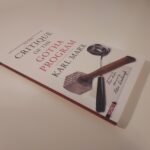Summary: This article responds to Hamid Assian’s “On Action & Analysis,” published here on Feb. 11 Â and to the comment on it and on theory and practice by Mia Carlsen — Editors
In my article Greece, Grexit, Socialism I referred to John Malamatinas, who pointed out back in 2011 in his “Die Krisenproteste in Griechenland [The crisis protests in Greece]” (in Detlef Hartmann & John Malamatinas, “Krisenlabor Griechenland. Finanzmärkte, Kämpfe und die Neuordnung Europas”, Hamburg 2011) that, when one looks into the political content of the statements of Left groups, particularly in the context of the present protests, the majority of these groups have failed to formulate a critical position on the crisis of state debt and to comprehensively criticize capitalist relations in their totality. This has resulted in a lack of any “alternative” to present to co-fighters in order to open political and social perspectives (p. 24).
And I said that this remark of Malamatinas is reminiscent of what Raya Dunayevskaya observed in the 1960s: “A new generation of revolutionaries began the 1960s as if activity, activity, activity would be sufficient to uproot the old, contending that if ever theory were needed, it could be picked up ‘en route’. They have by now learned one thing from the aborted May 1968 near-revolution in Paris: they can no more do without theory than without self-activity” (Philosophy and Revolution, New York 1973). I stated that if we are talking about the substance of Left theory for today – and the remark of Malamatinas quoted above has a focus on this substance – theorizing an alternative to capitalism is the most important aspect of this substance.
That is why the picking up of the topic of theory and practice by Hamid Assian– in his words “Action and Analysis”– and the comment by Mia Carlsen, in which she is connecting this topic of theory and practice with organization are welcome and necessary contributions in these times where activists are calling only for action, often in the form of saying that only praxis counts.
I would like to add some remarks to their contributions, because these touch the issue of “The Dialectics of Philosophy and Organization”.
Concerning the elements of theory, practice and organization that Hamid and Mia are pointing to in their contributions, these are of the utmost importance for revolutionaries, people who want to change capitalist society and to create a real human alternative to it. This is because their contributions are related to the nature and role of the “Subject.” The importance of these elements or moments, however, lies in their interconnectedness and the nature of this interconnectedness in capitalist society. This aspect is under-theorized in the article by Hamid. Mia is making in a certain sense a step forward by talking about or hinting at the dialectical relationship between theory and practice, and especially by seeing it in relation to the element of organization.
My concern here will be the dialectical relationship between these elements or moments in capitalist society and I will especially give attention to the Marxist-Humanist notion of it as in continuity with Marx’s philosophy of revolution.
Because of that I will at first have recourse to Dunayevskaya’s “Not By Practice Alone: The Movement From Theory” (written in 1984) and republished in The Power of Negativity (PON), pp. 273-288. I am concerned above all with section four of that article, “On The Threshold, 1950-1953: The Relationship of Abstract/ Concrete,” and I will restrict myself mainly to and lay weight on the last part in that section.
As the title of Dunayevskaya’s article suggests, she is stressing the “Movement From Theory.” What does she mean here? Let us take a closer look.
For this closer look we can turn to section four, because in this section Dunayevskaya is among other things taking a look back, focused on the genesis of Marxist-Humanism, from the period 1950-53 till the moment of writing, 1984. She writes that this look back “will help illuminate that historic movement from practice that was made into a philosophic category and became dialectically inseparable when theory, i.e., the theory of state- capitalism, reached philosophy, specifically that of Marx’s Humanism as it merged subjectivity and objectivity with our age’s breakthrough on the Absolute Idea as a movement from practice as well as from theory.” Actually she is writing here that the movement from practice is crystallizing in philosophy, not philosophy in general, but as part of Marx’s philosophy of revolution by way of the mediation of, taking form in, the activity of revolutionary philosophers. In order to illustrate this she refers in this context to the analysis of the 1949-50 Miner’s General Strike in which “we can see as a unity the spontaneous activity and what philosophic problems were being worked out simultaneously.”
Writing about the year 1953 she is highlighting four months –March until April – as four decisive points in the development of Marxist-Humanism, in which she puts in order the death of Stalin, the debate on  “The Trade Unions, Then and Now”, The Letters on the Absolute Idea and the June 17 uprising in the GDR (East Germany).
But already earlier in the previous sections (1, 2 and 3) we can read that the historic reach of Dunayevskaya goes much further back than these years of the genesis of Marxist-Humanism. She resumes and follows in section four the thread all way back to Marx, because it is in her vision necessary to create or recreate the dialectical methodology for her age in continuity with and as expression of Marx’s philosophy of revolution. As to this way of looking back further she states that it is not a question of rewriting history. It is a way of picking up central questions in the struggle against capitalist society by means of the dialectical method in capitalist society. It is important to note that this is a methodology of dialectics that is historically specific and not dialectics in general. She refers in her analysis to the “Organizational Question” 1905-07 [in the Second International- K.L.] in which actually, in the philosophical sense (in the context of Marx’s philosophy of revolution), the death of the Second International was on the agenda. She also discusses the question of the maturity of our age plus the digging into Hegelian dialectics, which made it possible to retrieve Lenin’s Philosophical Notebooks…”and to make sure never again to separate it [Hegelian dialectics — K.L] from dialectics of revolution.” This way of looking back results for Dunayevskaya in “the kind of dialectical methodology that is needed, …for the analysis of everyday events, especially those of our age which we have characterized as the movement from practice that is itself a form of theory.” (My emphasis)
Dunayevskaya, in engaging herself in the process of thinking of Marx, always emphasizes the totality of Marx thinking. In this totality the moments of Marx, take for example the new empirical anthropological studies in the last decade of Marx’s life, as well as Capital and the Grundrisse, are moments in the “development of Marx,” in which multilinearism in the Woman Question and the question of primitive communism (as for issues of differences and of private property) constitute main elements of his vision on historical reality. And she concludes:Â “Anyone who doesn’t see that fully today [Marx’s multilinearism and totality- K.L.] will fall, knowingly or unknowingly, into the statist mold of property-form instead of the key production relationship Marx taught us along with his theory of ‘revolution in permanence’.”
In capitalist society the production relationship is the key question, because the production sphere has everything to do with what I call the value dimension in capitalist society: the production of value, surplus value and the process of capital accumulation. This value dimension is the base, which determines in the last instance all the other processes in capitalist society. In order to develop the law of motion of capitalist society, the law of the tendential fall in the rate of profit, Marx had to base himself on this value dimension, thus the working out of the Critique of Political Economy. His notion of dialectics and that of the Critique of Political Economy, the analyzing of the value dimension, are two sides of the same coin.
After these first remarks we can focus on the existence and the notion of Subject. To get an idea of what Dunayevskaya conceives of as Subject in the context of Marx’s philosophy of revolution we have to turn to Rosa Luxemburg, Women’s Liberation, and Marx’s Philosophy of Revolution (RLWLKM), chapter XII, section 2, p. 180. She writes here that “Marx’s historic originality in internalizing new data… was a never-ending confrontation with what Marx called ‘history and its process. That was concrete. That was ever changing.”
After that follows the crucial sentence as to the notion of “Subject”: “And that ever-changing concrete was inexorably bound to the universal, because, precisely because, the determining concrete was the ever-developing Subject – self-developing men and women.”
In the framework of my remarks we have to hold on here to the notion of “Subject as self-developing men and women” [in historically specific societal conditions, thus not men and women in general as abstract entities]. One of the tremendous implications this notion has will become clear when I turn to the ground for “revolution in permanence”.
With this these notions of philosophy of revolution and the nature of the Subject at hand, Dunayevskaya analyses Rosa Luxemburg and V. I. Lenin. She characterizes Luxemburg, besides calling her a great revolutionary, as “nevertheless nearly totally deaf on philosophy.” A deafness on philosophy [of revolution] in Luxemburg, which meant, for example, as to her assessment of imperialism “that Rosa Luxemburg, so far in advance of all other Marxists, so movingly described the [imperialist subjugation of the masses] in the Kalahari desert, Morocco, Namibia, Martinique but couldn’t see them as Reason?” (“Forces of Revolt as Reason, Philosophy as Force of Revolt” (PON), p. 113).
In her “Not by Practice Alone …” Dunayevskaya criticizes not only Luxemburg, but also Lenin. As to the political critique on Lenin’s notion of the Party as a vanguard organization Dunayevskaya states that this critique already had been developed in the period of the Johnson-Forest Tendency. With her notion of the philosophy of revolution, in which the element of Subject is central, she criticizes Lenin philosophically too. Lenin did return for his State and Revolution to Marx’s Critique of the Gotha Program as ground, as the moment was there, to smash the bourgeois state. But he did not say anything about the Party structure. Marx, and later Dunayevskaya, had laid for the smashing of the bourgeois state “a totally different ground”. Actually, by not saying anything about the Party structure in the process of smashing the bourgeois state, Lenin missed, did not reach the philosophical moment in this process, for he neglected the role of Subject. And she writes that it, i.e., Subject, is “not only ground, but ‘Absolute.’ Philosophy of ‘revolution in permanence’ cannot possibly be only ground, or even content, substance; it is Subject (my emphasis), and that both objectively and subjectively. The unchained dialectic – both as dialectics of liberation and dialectics of thought, dialectics of self-development – that self-development is both Individual and Universal.”





0 Comments